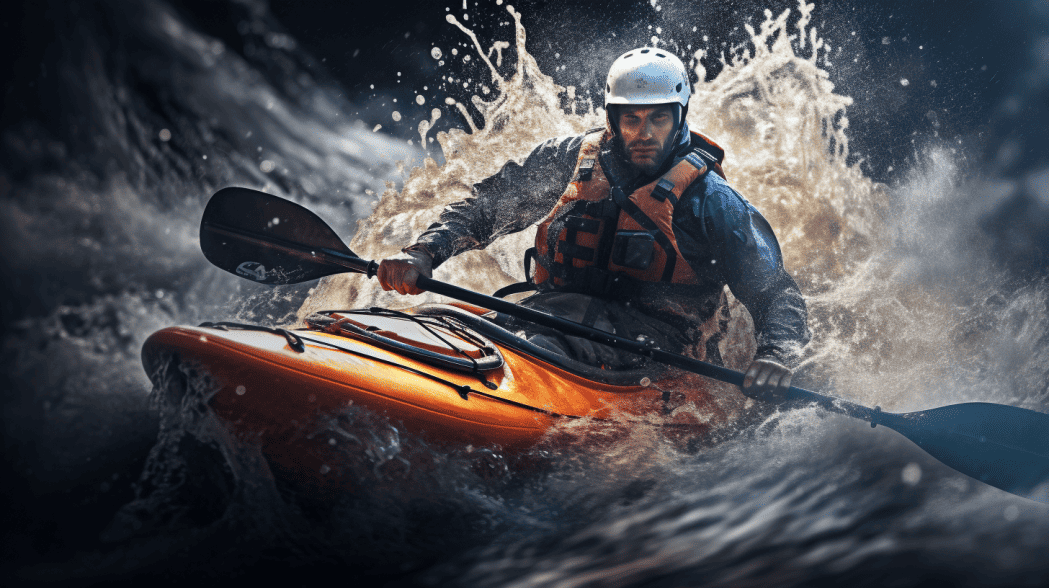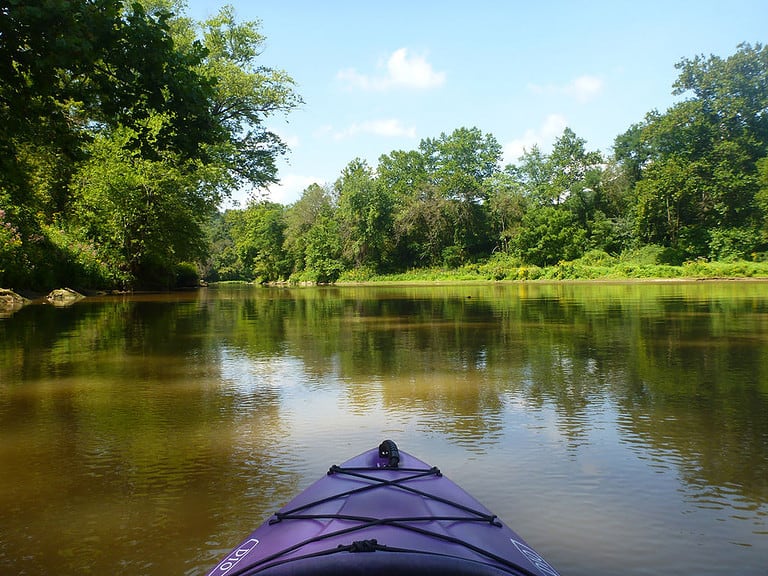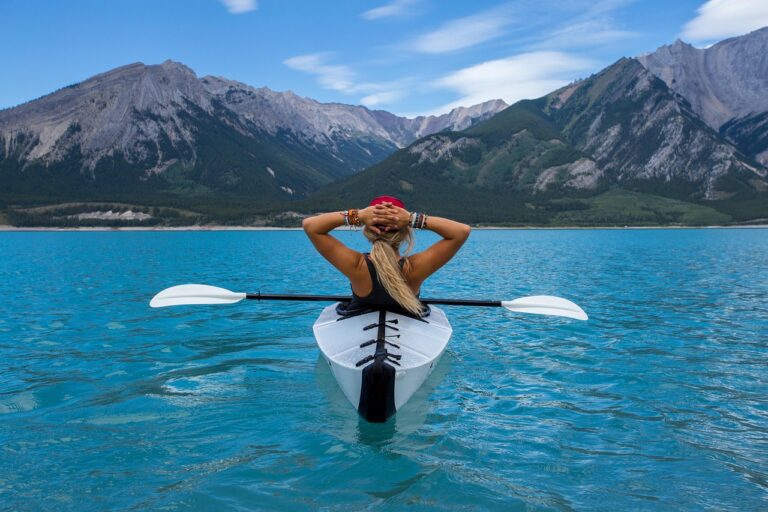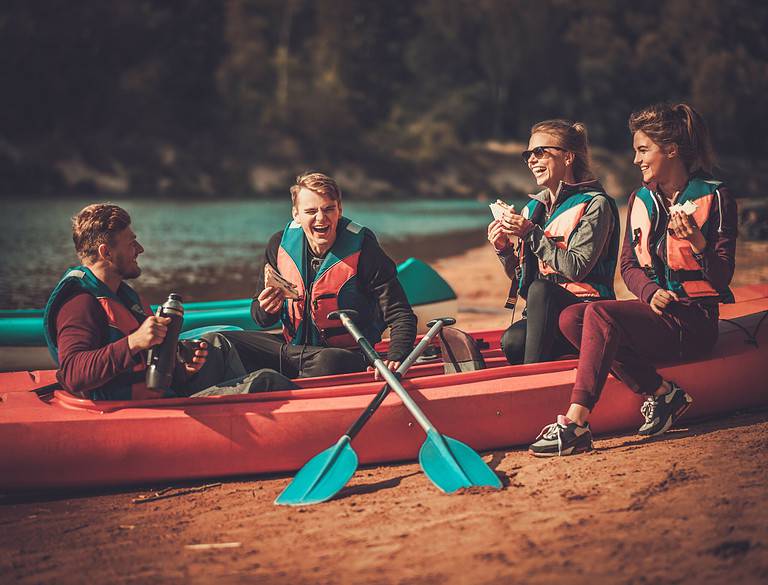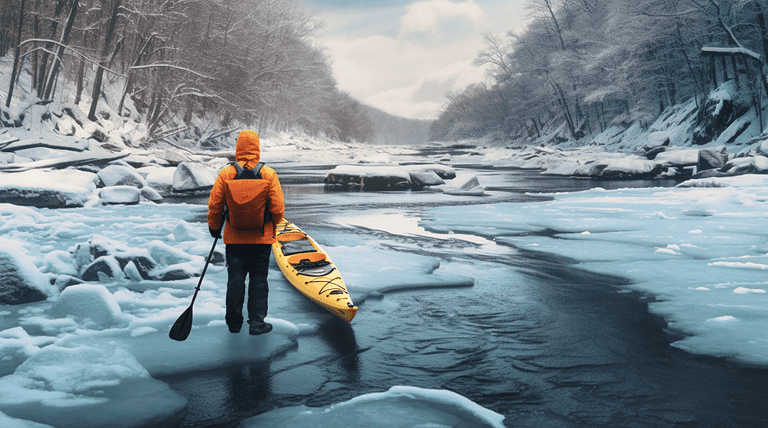Learn How To Control Tilt And Maintain Stability While Kayaking
Imagine us out on an azure lake, the sun shimmering off the water’s surface. We’ve got our kayaks and are all set for a day of fun and adventure. But hold on; there’s a slight tilt! Learn the Control Tilt And Maintain Stability. Suddenly, our peaceful trip seems less serene as we battle to maintain balance. Don’t worry; we’ve all been there. As experienced kayakers, we understand how crucial it is to control that tilt and maintain stability. It’s not just about staying dry; it’s about feeling confident and secure in your kayak – like you truly belong there on the water. In this article, we’ll share everything from understanding your kayak’s design to mastering balance control techniques. We’ll also address dealing with waves and currents, plus practicing capsizing and recovery. So whether you’re new to this exciting world or looking to improve your skills, let’s navigate these waters together!
Key Takeaways
- Understanding the importance of controlling tilt and maintaining stability while kayaking
- Learning basic kayaking techniques and paddle techniques for better stability control
- Incorporating balance exercises and core strengthening for mastering balance control
- Practicing capsizing and recovery techniques like the Eskimo roll to enhance stability control while kayaking
Understanding Your Kayak’s Design
To control tilt and maintain stability, it’s crucial to understand your kayak’s design, picturing the sleek shape of its hull as it cuts through water. We’ve all felt the thrill of gliding on a river or lake surface, propelled by our own effort and skill. Yet without a clear sense of what lies beneath us—the intricate design elements that allow us to maneuver with precision—our kayaking experience can quickly turn from joyous exploration into a struggle against nature.
When we talk about Hull Shapes, we’re referring to each kayak’s distinct designs. Whether flat-bottomed for stability in calm waters or rounded and V-shaped for speed and agility in choppy conditions, these shapes greatly influence how your kayak responds to your movements. The more you know about them, the better equipped you’ll be to adjust your paddling technique accordingly.
Material Selection is another factor that impacts our kayaking experiences. Imagine being part of an ancient tribe crafting vessels from animal skins stretched over wooden frames. Today’s technology has evolved significantly but understanding the materials used—whether rotomolded plastic or lightweight composite fibers—can help you appreciate their unique advantages and limitations.

As we move together toward greater mastery over our kayaking adventures, let’s not forget about learning basic techniques like proper stroke form or effective leaning methods for turning. They are equally important pieces of this adventurous puzzle.
Next up on our adventure is exploring these fundamental skills, which will give us more control when navigating different bodies of water while enjoying every moment!
Learning Basic Kayaking Techniques and Control Tilt And Maintain Stability
Mastering basic techniques is your ticket to smoothly gliding across the water’s surface, staying upright and balanced as if you were born in a kayak. It’s not just about physical strength or agility; it’s equally about understanding how your body movements affect your kayak’s stability and how to use paddle techniques to control tilt.
Firstly, let’s talk about paddle techniques. How you hold your paddle can dramatically affect your balance and stability on the water. A relaxed grip allows for more flexibility in steering and controlling motion while lessening the risk of tipping over. Remember to keep an equal distance between both hands on the paddle shaft for optimal balance.
Combining this with effective stroke styles increases control over direction and speed while maintaining an upright position. For instance, forward strokes propel us ahead while keeping our kayak stable, backward strokes help us reverse without losing balance, and sweep strokes allow us to change directions smoothly.
Secondly, safety equipment plays a crucial role in controlling tilt effectively. Using spray skirts keeps unwanted water out of our cockpit, which aids in preventing imbalance caused by sudden weight shifts. Likewise, wearing proper buoyancy aids enhances our flotation, contributing significantly to maintaining stability.
Remember friends: practice makes perfect! We’ll start off shaky, perhaps but soon enough we’ll be gliding along effortlessly like seasoned kayakers do – part of that exclusive club who understand their craft intimately.
As we continue our journey towards becoming proficient kayakers, let’s delve deeper into mastering balance control – such an essential skill that separates novice paddlers from experienced ones.
Mastering Balance Control
Feeling the rhythmic sway of the kayak beneath you, you’ll soon discover that balance isn’t just about staying upright – it’s also about harnessing this motion to navigate through waters gracefully. It’s a dance between you and the water, a testament to your strength and agility. But how do we master this delicate equilibrium?
We’ve found that incorporating balance exercises and core strengthening into daily routines greatly enhances our ability to control tilt in kayaking. Here are some techniques we’ve come to rely on:
- Balance Exercises:
- Standing on one foot: Sounds simple but its effect is profound! Practice standing on each foot for longer durations and watch your stability improve.
- Yoga poses like ‘Tree Pose’: This not only improves balance but also instills calmness which is essential while being out there amidst waves.
- Core Strengthening:
- Planks: This exercise works wonders in strengthening your core, providing an anchored base for better control.
- Kayak-specific workouts: Incorporating movements similar to paddling into workouts provides us with specific muscles needed for controlling tilt.
Remember, every little ripple can be seen as an opportunity rather than a threat – it’s all about perspective! We paddle more confidently when we shift from fearing imbalance to embracing it as part of the journey. We become one with our kayak and the water around us.
Slowly mastering these techniques will make us more capable when dealing with external elements like waves or currents. So let’s keep going forward, ready ourselves physically and mentally because up next awaits another significant aspect of kayaking – dealing with waves and currents! Let’s embrace them head-on together!
Dealing with Waves and Currents
Navigating through waves and currents isn’t just a test of skill, it’s a thrilling dance with nature that gets your heart racing! As we venture into the water, our kayak becomes an extension of ourselves. This oneness helps us to anticipate currents and deftly navigate waves.
We’ve found that mastering wave navigation involves understanding the types of waves and their behavior in different situations. When you see a breaking wave approaching you, angle your kayak at about 45 degrees to minimize tipping risk. Similarly, in current anticipation, reading the water surface for ripples or changes can help predict sudden shifts.
Here’s a handy table summarizing some key techniques:
| Wave Navigation | Current Anticipation |
| Keep low center of gravity by bending your knees | Look for subtle cues in the water flow |
| Angle your kayak at 45 degrees to incoming waves | Read ripple patterns for sudden shifts |
| Keep a low center of gravity by bending your knees | Paddle harder against strong currents |
One memorable experience was when we were kayaking off the coast of Maine. We saw an intimidating set of rolling swells coming our way. Instead of panicking, we remembered these strategies and put them into action. The thrill as we rode over each swell was unparalleled!
This wasn’t achieved overnight, though. It took patience, practice, and perseverance – the three Ps integral to any kayaking journey.
Remember that learning to control tilt and maintain stability while dealing with waves and currents is just one part of being comfortable on the water. Next up on our adventure is another crucial safety skill – practicing capsizing and recovery without losing composure or sense of direction.
Practicing Capsizing and Recovery
Capsizing can seem pretty terrifying at first, but with the right practice and composure, you’ll be flipping back upright in no time. The idea is not to avoid capsizing completely – that’s an unrealistic goal. Instead, we aim to familiarize ourselves with the situation and learn how to react swiftly and safely when it happens.
A significant part of this process involves mental preparation. It’s about reframing your mindset from fear to acceptance – understanding that capsizing is a natural part of kayaking. Through constant practice in controlled environments, we can maintain calm under pressure and make rational decisions without panicking.
Safety equipment plays a crucial role too. We always ensure our gear such as life jackets, helmets, and paddle floats are secure before setting off on any kayak trip. They may seem cumbersome or unnecessary at times, but trust us — they’re lifesavers during capsizing incidents.
Moreover, practicing recovery techniques like the Eskimo roll regularly will enhance your stability control while kayaking significantly. Even if you do capsize, you’ll know how to right yourself quickly without needing assistance.
We’ve been there; we felt the cold shock of water when we first capsized unexpectedly during a casual paddle session. But over time – after countless drills and experiences – we learned how to handle these situations confidently and effectively.
So don’t let fear hold you back from exploring those beautiful waterscapes around you! With proper training and preparedness for potential capsizes in your bag of tricks, there’s nothing stopping us from savouring every moment out there on the water together!
Frequently Asked Questions
What types of weather conditions are ideal for kayaking?
“We’ve found that calm, warm days are perfect for kayaking. The weather impact on our experience can be significant – wind and rain can make it challenging. Summer and spring are the ideal seasons as they usually bring favorable conditions. Remember, though, every climate varies so always check local forecasts before heading out. Once we were caught in a sudden storm and learned just how much weather plays a role in our enjoyment of this activity.”
What are the best ways to train physically for kayaking?
Like warriors training for battle, we engage in core strengthening and endurance building for kayaking. Push-ups, planks and sit-ups become our daily mantra to fortify our cores. Long-distance running enhances our stamina, making fatigue a distant memory. Our personal journey with kayak training has been a rewarding one. It’s hard work, but when we conquer those waves with ease due to our physical prowess, it’s worth every drop of sweat shed during those grueling workout sessions.
How do you handle encounters with wildlife while kayaking?
When we’re out kayaking, encounters with wildlife are part of the adventure. We make sure to identify animals correctly – that’s where animal identification comes in handy. It’s critical not to disturb them, respecting their natural habitats. If we want a keepsake of the encounter, we lean on wildlife photography skills for those perfect shots without causing any distress. Remember, we’re visitors in their home so it’s all about observing and appreciating from a safe distance.
Are there specific safety gears needed when going for kayaking?
Absolutely, we’ve found that gear maintenance is key to safety in kayaking. Essential accessories include a properly fitted helmet and personal flotation device (PFD). We never go out without a whistle for communication and a bilge pump for emergencies. Let’s not forget about a dry bag to keep our belongings safe! These gears have saved us more than once from potential mishaps. Remember, being part of our community means prioritizing safety first – it’s what keeps the fun in kayaking alive!
What are some common health risks or injuries associated with kayaking and how can they be prevented?
Common injuries in kayaking include shoulder dislocations, wrist sprains, and back strains. To prevent these, we incorporate injury recovery and preventive exercises into our routine. We’ve found that strengthening our core, shoulders, and wrists significantly reduces the risk of injury. Remember – it’s not just about paddling out there; it’s about belonging to a community that values safety and well-being as much as adventure. So take care of your body before you hit the water!
Conclusion
So, we’ve journeyed through the ins and outs of kayaking stability. We’ve learned how to twist our hips, paddle with precision, and even ride those pesky waves. Remember when we practiced capsizing? It felt like preparing for a joust in the Middle Ages! But now, armed with these techniques and experiences under our belt, we’re ready to conquer any waterway that comes our way. Here’s to keeping our kayaks steady and enjoying the ride!

